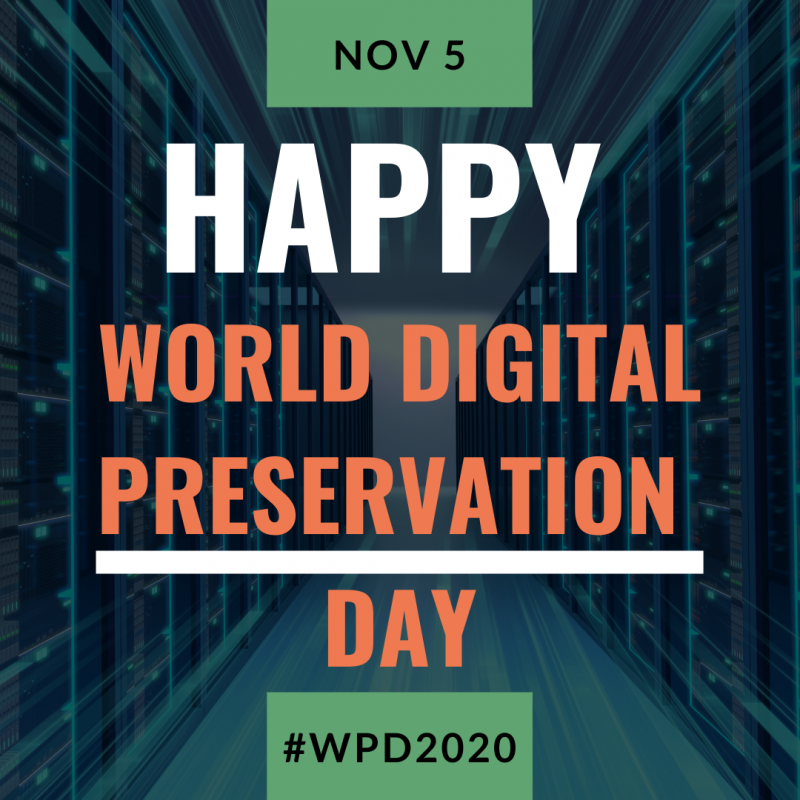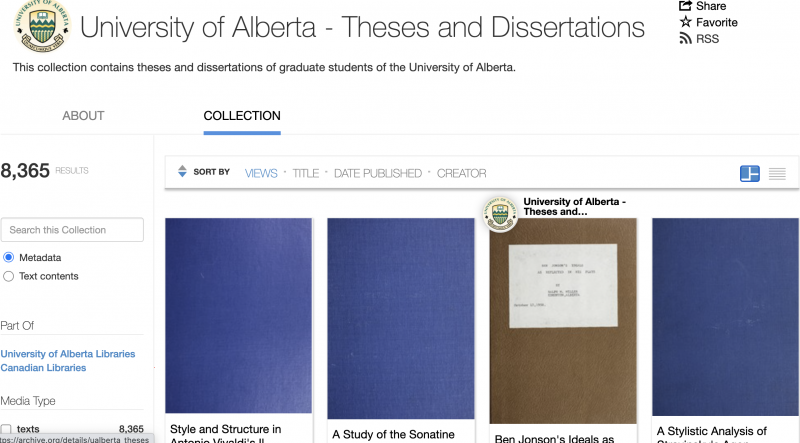
Happy World Digital Preservation Day! Today, November 5, is the day those of us in the library and archives community celebrate the wonderful work done to ensure that items from the past and present will be permanently preserved on open access, digital platforms to be accessed for future use.
University of Alberta Library has a number of initiatives that involve digital preservation, including our ongoing work to preserve born digital resources (ie. websites) using the Internet Archive’s Archive-It service and hosting multiple servers that store an assortment of scholarly content through the Clockss and Lockss Initiatives. Today we would like to highlight our ongoing efforts to preserve over a hundred years worth of theses and dissertations completed at the University of Alberta.

Up until the late-2000s completed theses and dissertations were only available as print items; very bulky hardbound volumes, to be exact. As technology progressed, students in thesis-based programs were required to submit a digital copy of their thesis to be stored in the Library’s online repository, ERA. This might not sound like a big deal, but preserving these documents in ERA, a 100% open access repository, means that anyone, anywhere can access the research of our students and can do so in perpetuity. Since introducing the electronic submission requirement for theses and dissertations, over 90% that were completed between 2009-2014 have been preserved in ERA and 100% that have been completed since then have a permanent home there.
What happens when a thesis or dissertation is preserved? There are a few steps it must go through to ensure that it is properly discoverable, as well as stored so that it will live on in pristine condition. When a thesis is submitted, the library is given digital copies, as well as the accompanying metadata for the document. We build upon that metadata and upload a digital copy to ERA. In addition to storing this information, ERA provides us with an expanded preservation package that we then deposit on servers hosted across three separate data centres on campus where the package’s file health is monitored. A copy of the package is also sent to the WestVault digital preservation storage network. Once the document package reaches WestVault, copies of it are made and distributed to five geographically dispersed locations across Western Canada. That’s nine copies of the thesis preserved in different locations! Even if, perish the thought, something were to happen to our local servers, there would be other copies available elsewhere that we could use to rebuild our collection. Think of it as not putting all our eggs in one digital basket.

I know what you’re thinking, that only covers the last 10 or so years. What about theses completed in the University’s first one hundred years? The answer is that our team of digitization specialists are working on digitizing these documents as well. Much of this work has already been done through a partnership with Internet Archive, with these documents being available both through ERA and through the Internet Archive collection University of Alberta – Theses and Dissertations.
If you’re interested in further details on the University of Alberta Library’s digital preservation efforts visit our Digital Preservation Services page.
